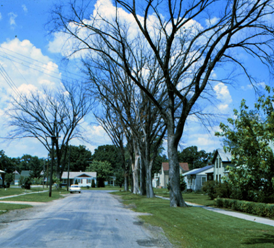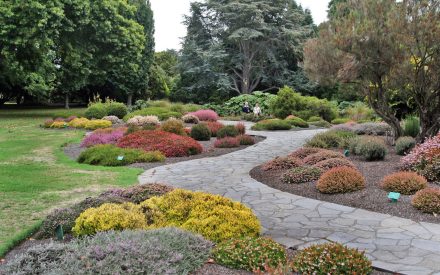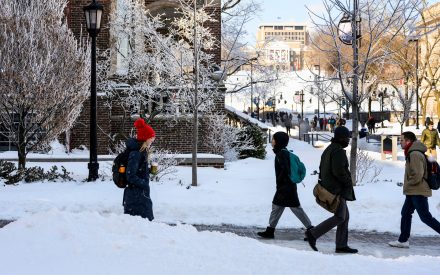
What is Dutch elm disease?
Dutch elm disease (DED) is a lethal fungal disease of native North American elms. The fungi that cause DED entered the United States early in the 1900’s on elm logs imported from Europe. DED now occurs throughout the United States and has led to the loss of the American elm as the premier street tree.
What is Dutch elm disease?
Dutch elm disease (DED) is a lethal fungal disease of native North American elms. The fungi that cause DED entered the United States early in the 1900’s on elm logs imported from Europe. DED now occurs throughout the United States and has led to the loss of the American elm as the premier street tree.
Where does Dutch elm disease come from?
DED is caused by two fungi, Ophiostoma ulmi and Ophiostoma novo-ulmi. These fungi are thought to have originated in Asia and were spread as elm trees and wood were moved from location to location. Once these fungi are introduced into an area, they are moved to healthy trees by two species of elm bark beetles (one native, one of European origin). These beetles breed in stressed trees (which include those trees suffering from DED), then carry spores of the DED fungi to healthy trees and inoculate the trees as they feed. Once DED fungi gain entry into an elm, they can move to other nearby elms underground via root grafts. Human activities such as pruning can lead to spread of these fungi as well.
How do I save a tree with Dutch elm disease?

Elms suffering from DED should be removed. Prior to removal, disrupt root grafts between the infected elm and other nearby healthy elms using a mechanical trencher or vibratory plow. If you do not disrupt root grafts, removal of the infected tree may accelerate movement of DED fungi through root grafts to adjacent trees. Destroy wood from diseased elms by burning (where allowed by local ordinance) or burying it. If you decide to keep the wood, remove the bark, then pile the wood and cover it with a heavy tarp, burying the tarp edges with soil, until the wood is used. Covering the wood limits access by elm bark beetles that potentially could pick up DED fungi from the cut wood and move them to other trees.
If you decide not to remove an infected elm, at least remove, then bury or burn, dead or dying branches. Make cuts six feet below any area showing symptoms. Disinfect cutting tools between each cut by treating them for at least 30 seconds with a 10% bleach solution or (preferably due to its less corrosive properties) 70% alcohol (e.g., rubbing alcohol or certain spray disinfectants). If you use bleach, be sure to thoroughly rinse and oil your tools after pruning to prevent rusting.
How do I avoid problems with Dutch elm disease in the future?
Fungicide injections of either propiconazole or thiabendazole can be useful for protecting high value, healthy American elm trees. Such injections are of limited use if trees are already infected. For best results, trees should be treated every two years by a certified arborist with additional training in making injection treatments.
If you decide to plant an elm, use non-native hybrid elms, such as “Accolade”, “New Horizon”, “Regal” and “Frontier”, that are resistant to DED. DED resistant American elm varieties are also currently available. Look for varieties such as “American Liberty”, “Independence”, “Princeton”, “New Harmony” and “Valley Forge” at your local nursery or garden center. Keep in mind however that resistance is not immunity, and even DED-resistant elm varieties can become infected. Typically however, in resistant varieties, DED does not develop as rapidly, providing time and opportunity to attempt to manage the disease using other strategies (e.g., pruning, fungicide injections).
For more information on Dutch elm disease:
Contact the University of Wisconsin Plant Disease Diagnostics Clinic (PDDC) at (608) 262-2863 or pddc@wisc.edu.
Authors: Jim Olis* and Brian Hudelson, UW-Madison Plant Pathology
Last Revised: 02/29/2024
D-number: D0045
*Completed as partial fulfillment of the requirements for a BS in Plant Pathology at the University of Wisconsin Madison
References to pesticide products in this publication are for your convenience and are not an endorsement or criticism of one product over similar products. You are responsible for using pesticides according to the manufacturer’s current label directions. Follow directions exactly to protect the environment and people from pesticide exposure. Failure to do so violates the law.
Thanks to Lis Friemoth, Ann Joy and Laura Jull for reviewing this document.
A complete inventory of UW Plant Disease Facts is available at the University of Wisconsin-Madison Plant Disease Diagnostics Clinic website: https://pddc.wisc.edu.
Send a Plant Sample for Analysis
Be cautious when self-diagnosing plant health issues. Very few diseases can accurately be diagnosed by eye.
Contact the UW Plant Disease Diagnostics Clinic (PDDC), and for a small fee, clinic staff can examine a plant, determine the cause of the disease/disorder, and provide advice on how to control or prevent the issue.
Download Article





 Choosing the Right Landscape Plants: Factors to Consider
Choosing the Right Landscape Plants: Factors to Consider Deciduous Trees Disorder: Miscellaneous Causes of Decline
Deciduous Trees Disorder: Miscellaneous Causes of Decline Deciduous Tree Leaf Disease Quick Reference
Deciduous Tree Leaf Disease Quick Reference Choosing Trees and Shrubs Under Powerlines
Choosing Trees and Shrubs Under Powerlines


